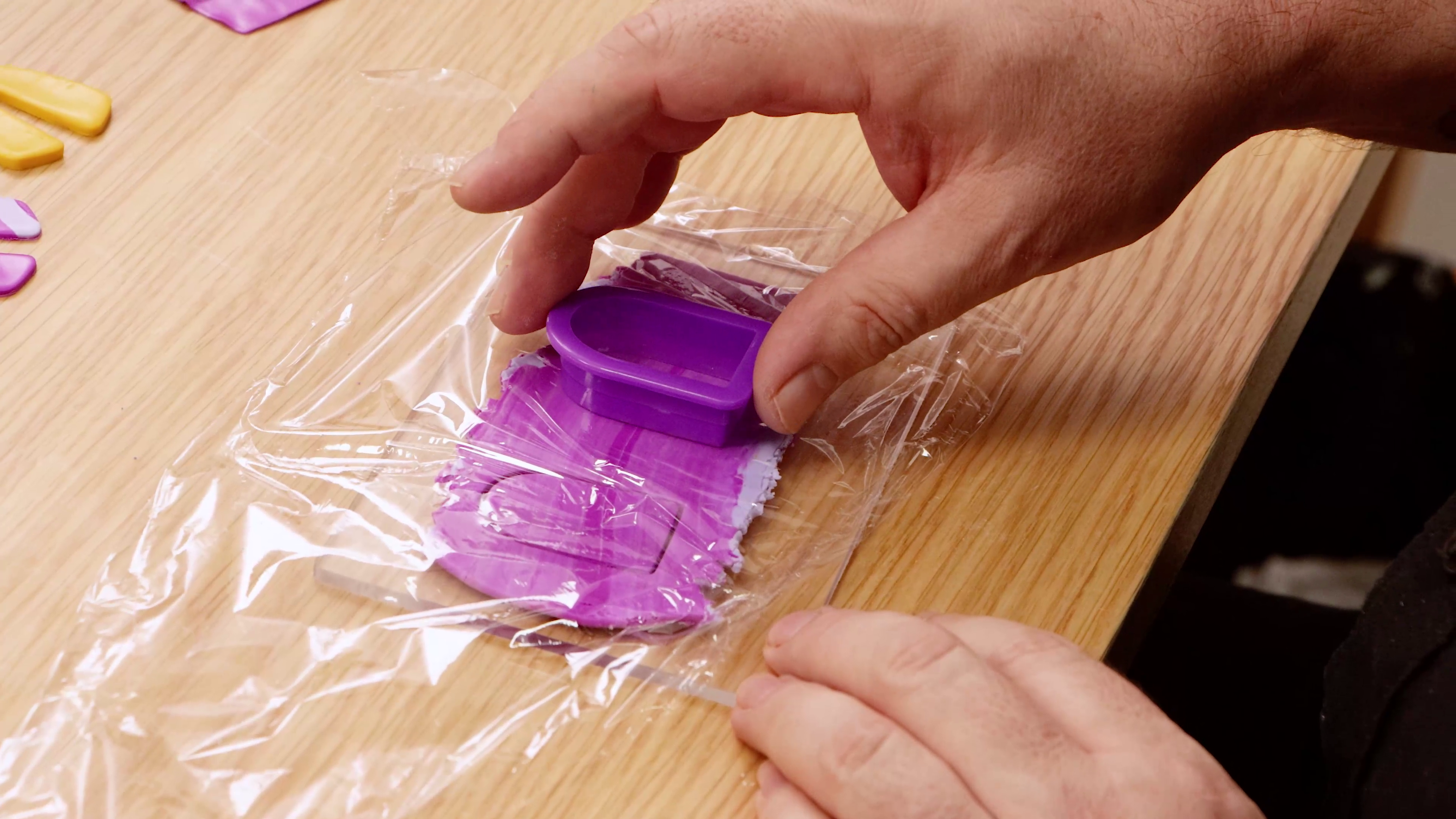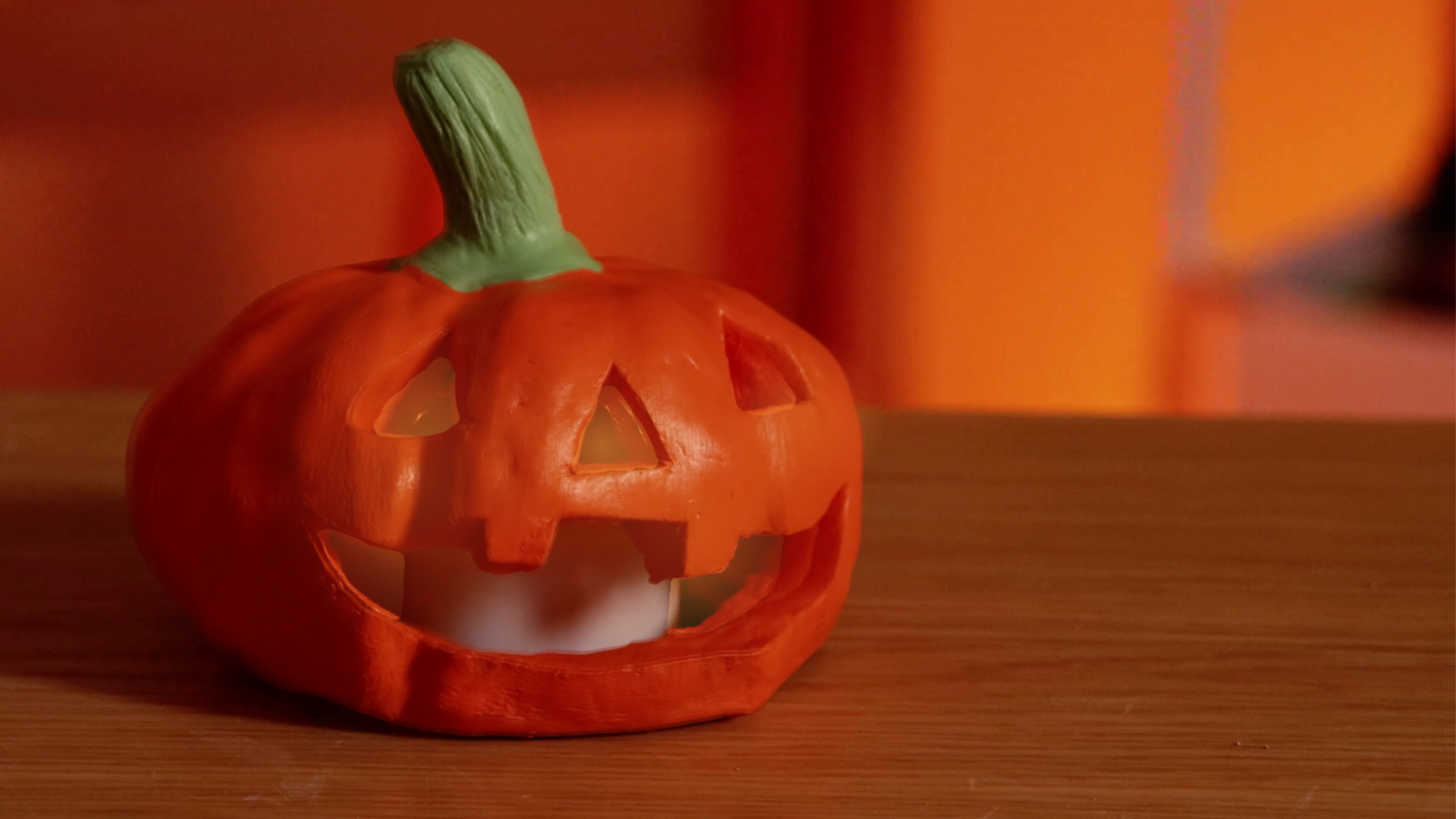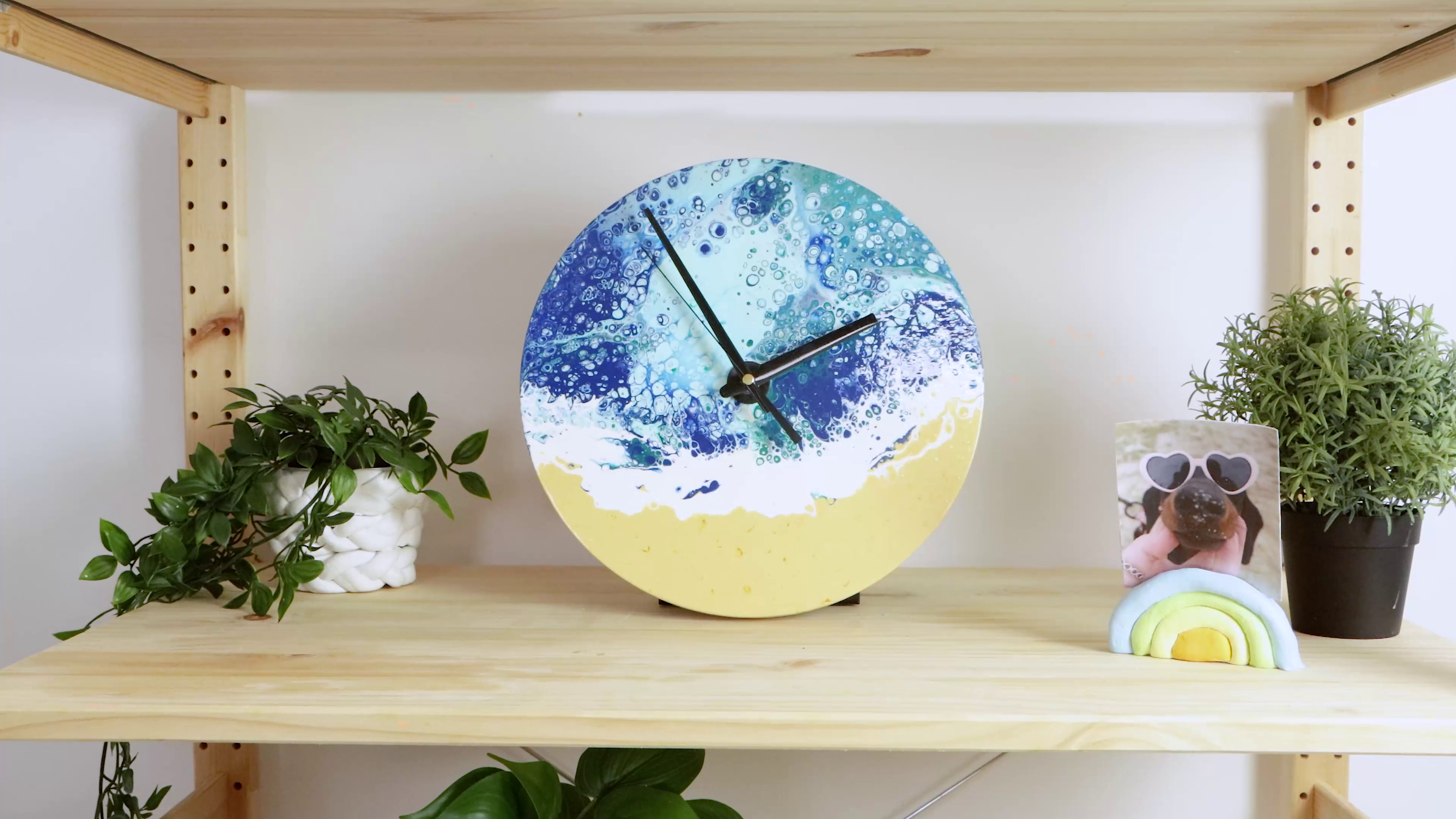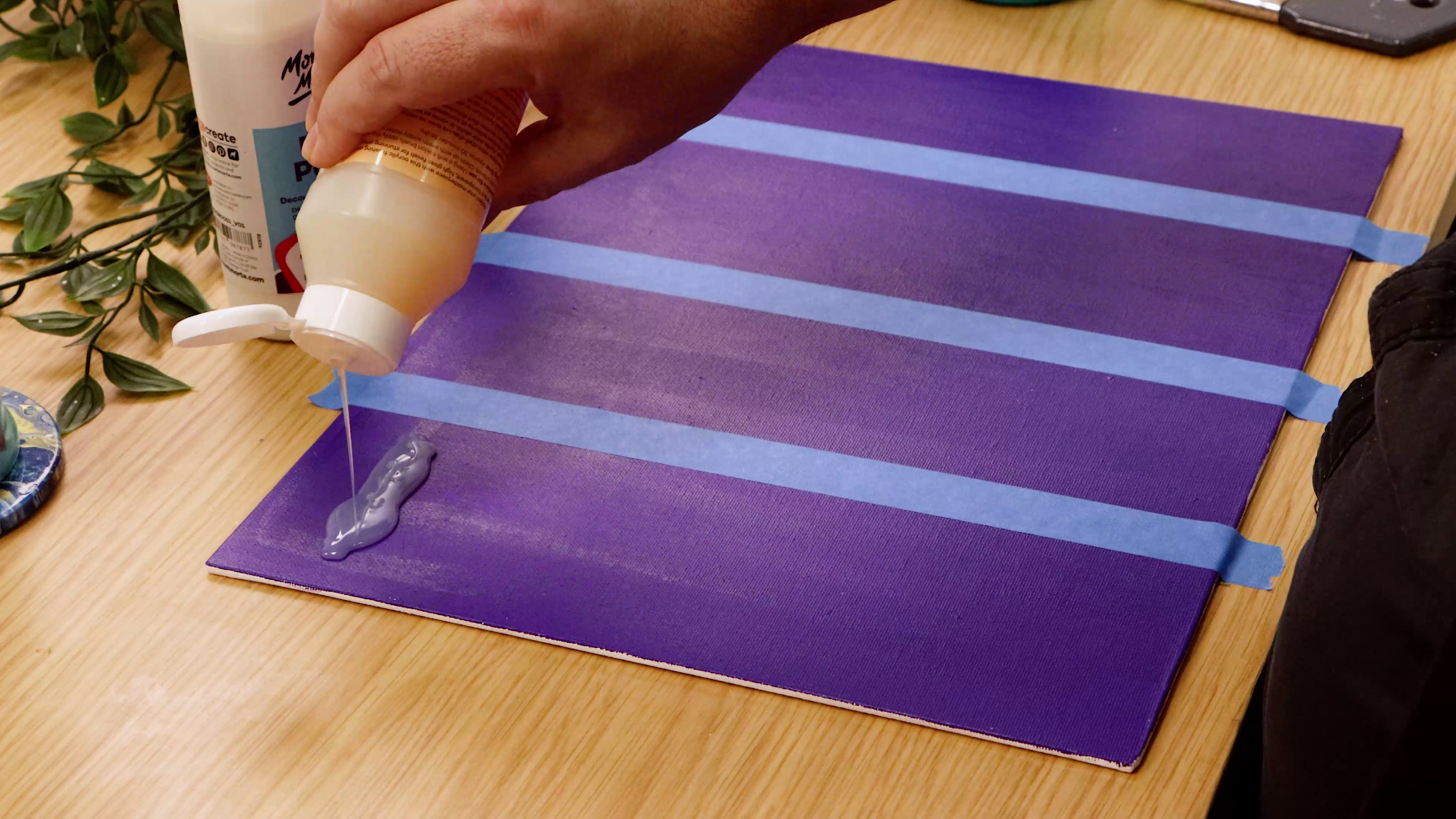Create a lion fish painting in water mixable oils
In this lesson we paint the beautiful, but dangerous, lionfish with H20 Water Mixable Oil Paint. You'll learn techniques such as using a pearl tint to create depth and translucence, as well as how to create interest through texture. We hope this inspires and equips you to paint your own masterpiece.
Step 1. Painting the ground.
The first step is to paint to canvas with Acrylic paint. This under painting will then be glazed with H20 Water mixable Oil Paint. The Acrylic paint used is Pearl Sapphire and Mid Yellow both in the Dimension range of paint. Lay down the Sapphire and the Mid Yellow next to each other and roughly blend them. Let this dry.
Step 2. Drawing in the outline.
On page 6 is a comprehensive detail line drawing of the fish. This needs to be transferred in full with a fine tip marker. This transferal can be done directly, with the grid system or with a projector. Whatever method is used ensure all the lines are in as it is an important guide for the paint placement stage.
Step 3. Glazing the background.
Now the outline is on we can glaze in the background. Squeeze out some Trans Green and a little amount of water mixable Linseed Medium onto a palette and paint in the background. Use a 75 mm Wide Artist Taklon brush for the large areas and a #12 flat to cut in around the fish. Ensure the pearl under painting can be seen beneath the Trans Green coat. If the undercoat is being concealed in any way add more medium.
4. Painting the lion fish.
The painting of this Lion Fish is easier than one might think as there is a reoccurring pattern of alternating White then Red then White and so on. This is why it is important to ensure that the line work is accurate. It is best to work in stages so as not to avoid confusion. The White used is Titanium White and the Red is mixed from Permanent Rose and Red Ochre in equal proportions. You may have to add a touch of medium to increase the flowability. The body is fairly straightforward. A shadow needs to be added to the underside of the eye with a touch of Purple to convey a concave shape.
Next we move onto the dorsal fins. These can be handled the same way but the White and Red are blended so there is a smooth transition. I then complete the rest of the body.
I create a very translucent coat of Trans Green and paint it into the tail fins and webbing between the pectoral fins and let this dry.
The individual tail fins are glazed with a translucent coat of White, this coat is then let dry, and then spots of Red are applied. Soften the edge of each spot by blending it into the White coat.
The spines on the pectoral fins can be painted in with Reds and White. To suggest a tubular shape, White is blended into the front side of the spine. By this stage the Trans Green glaze on the webbing between the pectoral fins should be dry and a White glaze can be laid onto it. Into this White glaze the Red colouring can be painted in.
Ensure that the brush is fairly dry as you only need a tint of colour on the webbing.
The final step is to add the circular markings on the webbing.
Material List
- Water Mixable Oil Paint 37ml (1.25oz) - Titanium White
- Water Mixable Oil Paint 37ml (1.25oz) - Zinc White
- Water Mixable Oil Paint 37ml (1.25oz) - Permanent Rose
- Water Mixable Oil Paint 37ml (1.25oz) - Red Ochre
- Water Mixable Oil Paint 37ml (1.25oz) - Purple
- Water Mixable Oil Paint 37ml (1.25oz) - Trans Green
- Taklon Brush Set in Wallet Signature 11pce - Acrylic
- Artist Acrylic Brush Premium Taklon Flat Wide 75mm
- Double Thick Canvas Premium 91.4 x 121.8cm (36 x 48in)
- Dimension Acrylic Premium 75ml (2.5 US fl.oz) Tube - Pearl Sapphire





























